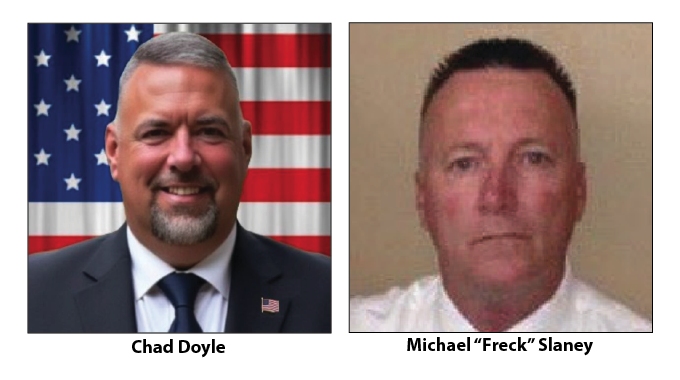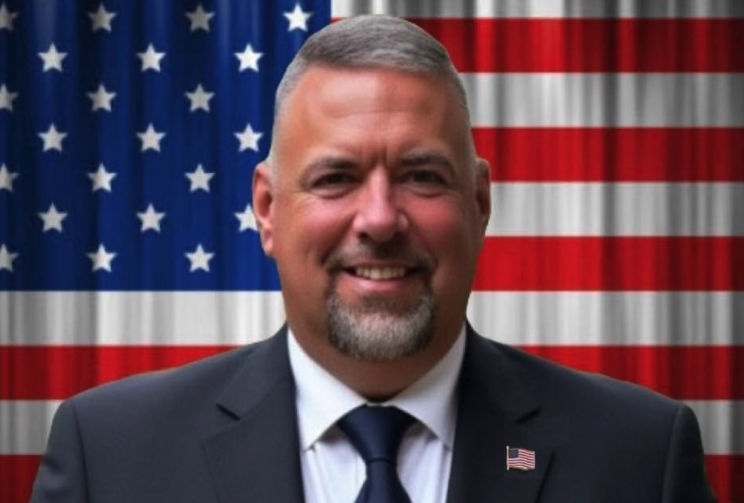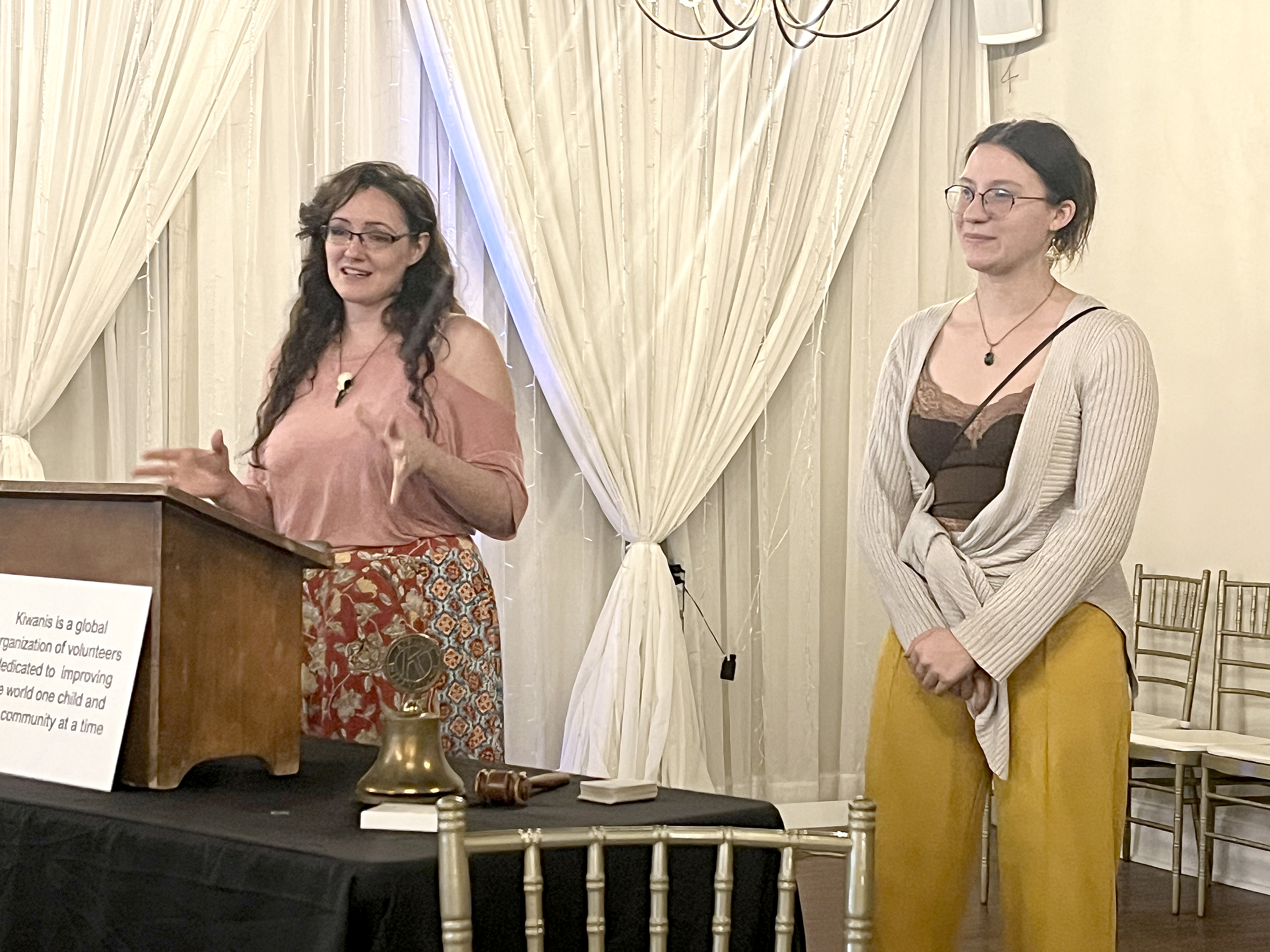The Informer: Floods followed in wake of 1940 Gulf Coast storm
Published 8:23 am Saturday, February 1, 2025

- Bobby Boudreaux, John Van Norman, Vernon Adams, Pete Dupuis and Norman Duett take a break from paddling through floodwaters to check on the Lake Auto Parts Co. shop. (American Press Archives)
When an unnamed hurricane made landfall near Cameron on Aug. 8, 1940, floodwaters followed in its wake that inundated Southwest Louisiana.
“An all-night rain which trailed the Gulf hurricane today turned Southwest Louisiana into a flooded area, marooning thousands of persons and temporarily paralyzing business,” reads an Aug. 9, 1940, edition of the American Press.
Nearly 24 inches of rainfall was recorded in some areas.
Trending
Refugees in lower sections of Lake Charles — where the water had risen to more than five feet — took refuge in public buildings where dry clothing was supplied and food furnished.
“Doctors and physicians are taking necessary precautions to prevent typhoid fever,” the article assured readers.
About 150 local refugees were registered by Red Cross disaster relief workers by the time the American Press’ afternoon edition hit newsstands.
“The local refugees came from areas along the banks of the river north of Goosport to the ice plant and from the English Bayou section,” the newspaper reported. “Others who will be cared for tonight were occupants of a shanty-boat settlement at the site of the old J.A. Bel Lumber Mill beyond the foot of Lawrence Street.”
One centenarian, however, refused to abandon her flooded home, the American Press reported.
“Back water from English Bayou has entered the Chloe home of Mrs. Leonise LeBleu, Calcasieu’s 100-year-old resident,” an Aug. 10, 1940, article reads. “Notwithstanding the four to five feet of water which covers the cook stove on the first floor, Mrs. LeBleu resolutely declines to leave her home, despite the urging of her children and grandchildren.
Trending
“She and her household attendants have moved to the second floor of her home, and there she expresses her determination to stay ‘for the duration,’ ” the article reads.
The American Legion established mess headquarters at the Masonic Temple, where refugees were registered and fed and then assigned to living quarters either there, the Knights of Columbus Hall on Iris Street or the Southwest Louisiana Trades School at the corner of Kirkman and Mill streets.
Mayor J.H. Handley said 1,500 blankets and 100 mattresses were initially sent from Camp Beauregard to the trades school for use, but that “the supply was inadequate to care for the increasing numbers.”
Eventually the John A. McNeese College and Central School buildings were needed for shelter.
“Men, women and children were sleeping on cement floors in the Central School building and the mayor issued a plea to all motorists to avoid driving near the place of refuge because of the danger to small children who are playing on the grounds of the school,” an Aug. 12, 1940, edition reads.
As the Calcasieu River continued to rise — it was documented to be rising an inch an hour the day after the storm — the Pithon coulee backed up to flood Hodges Street. Flooding was also reported at the north end of Ryan Street.
W.T. McInnis, commissioner of streets and parks, told the American Press he and his street foreman, Alcie Demmeritt, kept watch to keep storm sewers open throughout the night, sweeping the entirety of the city twice the first night.
Lester Freeman, who owned a cabin cruiser, rescued a family on the inundated Coon Island at the north end of Prien Lake. “A complete search of the area was made at the same time to find whether other families thereabout wished to quit their homes,” the newspaper reported.
C.L. Barnill of the Majestic Barber shop offered free haircuts to refugees.
“The men, women and children could certainly be made to feel better by getting their hair combed, and their hair cut, aside from the benefit from a sanitary standpoint,” Barnhill said.
The Sunday school rooms on the first floor of the First Methodist Church on Broad Street served as a clothing depot.
By Aug. 12, 1940, refugees in Lake Charles numbered 2,067 — “most of whom were suffering from hunger, chills and lack of rest.”
By Aug. 14, that number had reached 3,000.
In all, Lake Charles housed the refugees — most of whom were from Gueydan, Rayne, Jennings and Lake Arthur— for a total of three weeks.
Cameron families were not forgotten. Boats from the area brought food to the more than 300 families stranded in the Cameron Parish Courthouse before they were transported to higher ground.
Lake Charles and DeQuincy farmers also joined Cameron Parish Sheriff Mark Richard in “driving and swimming” 1,500 head of cattle from Cameron into Calcasieu Parish.
Farmers suffer
The floodwaters wreaked havoc on Southwest Louisiana farms.
“One Calcasieu farmer, Joe Natali, who lives southeast of Lake Charles, estimated his 740 acres of rice is damaged at least 50 percent if not more,” the Aug. 12, 1940, edition reads. “Charles C. Collet, parish agriculture agent, declared the corn crop is damaged as ripe ears have been blown down with their stalks into the slush of the fields.”
Sweet potatoes were the only crop reported undamaged.
Nearly 18,000 of the area’s 250,000 cattle drowned in the floodwaters. The Red Cross distributed feed to the remaining cattle who were brought to higher ground by barge.
Aftermath
“When the full story of the 1940 flood in South Louisiana is told, it will be a story of a fine people meeting a great disaster courageously and calmly,” reads an Aug. 12, 1940, American Press editorial. “It is in times like these that we see the fundamental greatness of our people.”
The newspaper said despite thousands losing their homes and belongings “there has been no whimpering, no blaming of an unjust fate. There has been only a calm acceptance of what has happened and a feeling of gratitude that so few lost their lives in this calamity.”
Three drowning deaths were reported in the storm.
“Those who were so fortunate as to escape the flood and the storm have been quick to meet the call of distress and provide food, clothing, and shelter for the homeless,” the editorial continues. “It is an inspiration to have this proof of the strong character of our people.”





